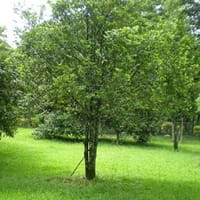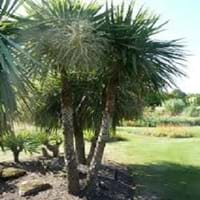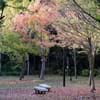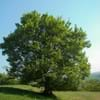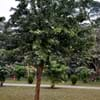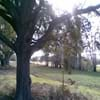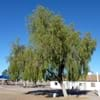What is
Life Span
Perennial
Perennial
Type
Tree
Broadleaf Evergreen
Origin
Central Asia, Eastern Europe, Europe, Nepal, Southern Asia, Southern Europe
New Zealand
Types
Not Available
Not Available
Number of Varieties
150
32
Not Available
Habitat
Cold Regions, Hills, Hillside
Coastal Regions
USDA Hardiness Zone
9-11
8-11
AHS Heat Zone
7-1
Not Available
Sunset Zone
1a, 1b, 2a, 2b, 3a, 3b, 4, 5, 6, 7, 8, 9, 14, 15, 16, 17, 18, 19, 20, 21
21,22
Habit
Oval or Rounded
Upright/Erect
Information
Plant Size
Minimum Height
1,000.00 cm
40
610.00 cm
99+
Minimum Width
1,220.00 cm
14
240.00 cm
99+
Plant Color
Flower Color
Not Available
White
Flower Color Modifier
Bicolor
Bicolor
Fruit Color
Green, Brown
White, Blue
Leaf Color in Spring
Green, Copper
Burgundy, Dark Red, Copper
Leaf Color in Summer
Dark Green
Burgundy, Dark Red, Copper
Leaf Color in Fall
Green
Burgundy, Dark Red, Copper
Leaf Color in Winter
Green
Burgundy, Dark Red, Copper
Shape
Leaf Shape
Oval
Long Narrow
Thorns
No
No
Season
Plant Season
All year
Spring, Summer, Fall, Winter
Growing Conditions
Sunlight
Full Sun
Full Sun, Partial Sun, Partial shade
Growth Rate
Medium
Fast
Type of Soil
Clay, Loam, Sand
Loam, Sand
The pH of Soil
Acidic, Neutral
Neutral, Alkaline
Soil Drainage
Well drained
Well drained
Bloom Time
Late Spring, Early Summer
Late Spring, Early Summer, Summer
Repeat Bloomer
No
No
Tolerances
Not Available
Drought, Salt
Care
Where to Plant?
Ground
Ground
How to Plant?
Budding, Seedlings
Stem Planting, Transplanting
Plant Maintenance
Medium
Medium
Watering Plants
Watering Requirements
Requires watering in the growing season, Water Deeply, Water when top layer of soil becomes dry
Average Water Needs
In Summer
Lots of watering
Lots of watering
In Spring
Moderate
Moderate
In Winter
Average Water
Average Water
Soil
Soil pH
Acidic, Neutral
Neutral, Alkaline
Soil Type
Clay, Loam, Sand
Loam, Sand
Soil Drainage Capacity
Well drained
Well drained
Sun Exposure
Partial Sun, Partial shade
Full Sun, Partial Sun, Partial shade
Pruning
In Early Autumn, Prune to stimulate growth, Remove dead leaves
Prune if you want to improve plant shape, Remove damaged leaves, Remove dead leaves
Fertilizers
fertilize in spring, Nitrogen
All-Purpose Liquid Fertilizer
Pests and Diseases
Anthracnose, Armillaria mellea, Blight, Caterpillars, Crown gall, Crown rot, fungus, Powdery mildew, Red blotch
Red blotch
Plant Tolerance
Drought, Frost
Drought
Facts
Flowers
Showy
Insignificant
Flower Petal Number
Single
Single
Fruits
Showy Fruit
Showy
Yes
Edible Fruit
Yes
Yes
Fragrance
Fragrant Flower
Yes
Yes
Fragrant Fruit
Yes
No
Fragrant Leaf
Yes
No
Fragrant Bark/Stem
Yes
No
Showy Foliage
Yes
Yes
Showy Bark
No
No
Foliage Texture
Medium
Coarse
Foliage Sheen
Glossy
Not Available
Evergreen
No
No
Invasive
Sometimes
No
Self-Sowing
No
No
Attracts
Aphids, Bees, Beetles, Caterpillar, Small mammals
Caterpillar, Moths
Allergy
Abdominal distension, flushing of face, hallucinations, Headache, Pollen
Asthma
Benefits
Uses
Aesthetic Uses
Not Available
Beautification, Landscape Designing, Showy Purposes
Beauty Benefits
Good for skin and hair
Not Available
Edible Uses
Yes
Yes
Environmental Uses
Absorbs greenhouse gases, Absorbs huge amounts of CO2, Air purification, Amazing growth rate, Erosion control, Food for birds, Food for insects, Forms dense stands, Nesting sites for birds, Prevent Soil Erosion, Shadow Tree, Shelter for wildlife, Windbreak
Air purification
Plant Benefits
Medicinal Uses
Anemia, anti-cancer, Antispasmodic, Asthma, Diarrhea, Healing, Stomach spasms, Thoat infection
Diabetes, Dysentry, Stomach pain
Part of Plant Used
Fruits, Seeds
Leaves, Root, Stem
Other Uses
Making deodorants, Oil is used for aromatherapy, Oil is used in mosquito repellents, Used as a laxative, Used for its medicinal properties, Used for making soaps, Used in biomass
Decoration Purposes, Employed in herbal medicine, Showy Purposes, Used As Food, Used as Ornamental plant
Used As Indoor Plant
No
No
Used As Outdoor Plant
Yes
Yes
Garden Design
Container, Groundcover
Container, Feature Plant, Foundation, Houseplant, Screening, Wind Break, Tropical
Scientific Name
Botanical Name
Myristica fragrans
CORDYLINE australis 'Red Star'
Common Name
Nutmeg
Cabbage Palm
In Hindi
जायफल
गोभी पेड़
In German
Muskatnuss
Cabbage tree
In French
noix de muscade
arbre de chou
In Spanish
nuez moscada
árbol de la col
In Greek
μοσχοκάρυδο
λάχανο δέντρο
In Portuguese
noz-moscada
repolho árvore
In Polish
gałka muszkatołowa
kapusta drzewo
In Latin
nutmeg
brassica ligno
Classification
Kingdom
Plantae
Plantae
Phylum
Magnoliophyta
Magnoliophyta
Class
Magnoliopsida
Liliopsida
Order
Magnoliales
Asparagales
Family
Poaceae
Asparagaceae
Genus
Myristica
Acidosasa
Clade
Angiosperms, Monocots
Angiosperms, Monocots
Tribe
Myrteae
Not Available
Subfamily
Myrtoideae
Lomandroideae
Number of Species
2
99+
4
99+
|
||
|
||
|
